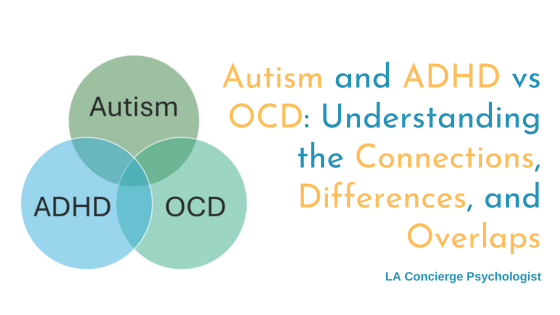When I hear someone ask the question, “Can women be autistic?” I realize we still haven’t overcome the cultural misconceptions about autism that were established more than 75 years ago. When German pediatrician Hans Asperger used the term “autism” in 1944, he was referring to a group of boys. Although he later realized that girls can also be autistic, Asperger initially believed autism only occurred in males. Many other psychologists at the time—including Austrian-American psychiatrist Leo Kanner—likewise viewed autism in females as either rare or nonexistent.
Boys were the exclusive focus of early autism studies, so 20th-century diagnostic criteria were based on male presentations of the condition, resulting in increased male diagnoses. This diagnostic self-fulfilling prophecy has perpetuated Asperger’s early view of autism as a male-only condition. We now know that is not at all the case.
Since then, psychologists have accepted the existence of autism in women and started to study how autism presents itself differently in females. As a result, modern researchers now hypothesize that female autism rates are likely higher than initially believed. While early research suggested a boy-to-girl ratio of at least 4:1, more recent studies have placed the figure closer to 3:1 or even 2:1.[1]
Thanks to increasingly gender-inclusive research, people better understand female autism symptoms. Growing public awareness has empowered autistic women to describe their own experiences. Nevertheless, significant barriers remain between autistic women and accurate, timely diagnoses.
Why Signs of Autism In Women Are Often Missed
Both autistic men and women report many of the same challenges, including difficulties building relationships, managing emotions, and adapting to change. Autism may feel similar for members of both genders, but its external expression is different.
In a paper published in 2016, a group of London researchers summarized their colleagues’ findings regarding differences in how autism shows up in men vs. women. According to the paper, boys tend to externalize their struggles through repetitive behaviors, impulsivity, aggression, and conduct problems. Signs of autism in women, on the other hand, tend to be less visible. Women are more likely to internalize their difficulties, resulting in frustration, burnout, anxiety, and depression. Thus, making it more likely they stay hidden.
Further complicating matters, autistic women and girls are often diagnosed with other disorders such as attention-deficit/hyperactivity disorder (ADHD), obsessive-compulsive disorder (OCD), anorexia, borderline personality disorder, and agoraphobia. In some cases, these diagnoses are accurate; in others, they reflect health care professionals’ inability to recognize the true cause of their clients’ unique traits.[2][3]
Research also suggests that autistic women show greater social motivation and seem better able to maintain traditional friendships.[3] Because social difficulties are a significant criterion in autism diagnosis, these women tend to fly under the radar. But how do they manage to appear neurotypical when most autistic men cannot? Research is ongoing, but part of the answer lies in a concept called masking.
What is Autistic Masking?
Many autistic women have mastered a technique called masking, which allows them to imitate neurotypical speech and body language. According to autistic women’s accounts of their experiences, masking involves close observation of other people’s behaviors both in real life and in fictional portrayals on television, in magazines, and in other media sources.[2]
When autistic women see certain behaviors leading to desirable outcomes, they may not understand why. But, they can consciously pay attention to those behaviors and then replicate them in their own lives. Neurotypical people exhibit certain behaviors naturally and can effortlessly interpret those same behaviors in others. With autistic people, they must put conscious effort into every verbal inflection, word, and gesture.
Many autistic people worry they won’t be accepted as they are. Masking allows them to reduce their risk of rejection by appearing more neurotypical. This sort of social camouflage helps them to fit in with their peers, but it comes at a big cost.
The energy required to accommodate others’ expectations, mimic neurotypical communication styles, and avoid stimming requires tremendous effort and often leads to emotional burnout. Frustration built up during the day often explodes in the evening after returning to the relative safety of home. When autistic women become too exhausted to continue masking, they increase their risk of developing anxiety and depression.
Masking makes it more difficult for parents, teachers, and other adults to land on an autism diagnosis. Many women on the autism spectrum have become such expert maskers over the years that they appear neurotypical, even to those closest to them. As a result, their autistic traits and co-occurring symptoms are often attributed to another cause, preventing them from getting the support and guidance they need.
Therapy Gives Autistic Women a Break From Masking
The sad misconception that autistic people are somehow “less than” their peers feeds autistic women’s desire to mask. Many worry that if they show their true selves, they won’t be accepted or loved. By working with an autism specialist, they can experience the relief of being seen and valued without being judged.
It takes time to accept and celebrate one’s neurodiversity, but autistic women can learn to embrace their unique qualities. Autism counseling provides a safe place to relax and let down their guard while exploring ways to leverage their strengths and improve their relationships without sacrificing who they are.
Therapy enables assertive communication by helping women develop the confidence to let their real personalities shine through. Rather than going along with conversations and situations that make them feel confused or uncomfortable, autistic women can learn to remedy their discomfort through open communication.
We live in a world where, sadly, neurodiversity still makes many people uncomfortable. Autistic women may still choose to mask at times to protect themselves emotionally. Masking may always be part of most autistic people’s lives, even after therapy. However, talking to an experienced therapist can reduce a person’s reliance on masking and free them to explore who they are underneath the mask.
We specialize in diagnosing and treating autism in adult men and women. If you or someone you know could benefit from the encouragement and support of an experienced autism therapist, we can help. Send us a message or book a free 20 minute consultation call with Dr. Barajas or Dr. Goldman.



